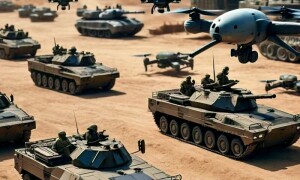ACCORDING to an exhaustive analysis based on 2017-18 data and which was published in the National Human Development Report (NHDR) 2020, Rs2,660,000,000,000 (Rs2.6 trillion) are spent each year on the privileges and benefits enjoyed by powerful interest groups in Pakistan. That is close to seven per cent of the GDP. Compare that to expenditures on debt servicing, which account for 5.4pc of GDP; security, 4.1pc; and social services (education, healthcare, water and sanitation, etc), at just 3.5pc. The government’s total tax collection is only around 11pc of GDP.
This appropriation equivalent to 7pc of the GDP is one of the primary reasons Pakistan has been unable to provide its citizens with good healthcare, give them education or skills training, facilitate their economic development, or ensure welfare for the deserving needy. To understand how it happens, we need to see whether the country’s economic policies were designed for the benefit of the population at large. If not, then whom do they benefit? How is it done and what is the scale of the problem?
In its early years, Pakistan was deeply influenced by the then prevailing Western economic approach for developing countries, which was based on the assumption that the rich would save more and then invest, making the economy grow, and, eventually, benefits would also reach the rest of the population. This was embraced in the Planning Commission’s Third Five-Year-Plan 1965-70: “It is clear that the distribution of national production should be such as to favour the savings sectors.”
Here, ‘savings sectors’ includes large-scale industry, capital markets and investors in agriculture. The country’s pre-eminent economic thinker of the time, Dr Mahbubul Haq (chief economist of the Planning Commission from 1957-1970, and later finance minister) wrote in his book, The Strategy of Economic Planning: “There exists, therefore, a functional justification for inequality of income if this raises production for all and not consumption for a few. The road to eventual equalities may inevitably lie through initial inequities.” But the high savings assumption did not materialise and the policy of concentrating national income in the hands of the upper-income groups did not result in transformative expansion in the economy nor the passing on of substantial ‘trickle-down’ benefits to the rest of the population.
We need to see whether the country’s economic policies were designed for the benefit of the population at large.
Due to this economic approach, interpersonal and inter-regional inequalities rose dramatically. “In the pursuit of securing its power base, the government, by means of subsidies, manipulation of tariffs and the exchange rate mechanism, transferred rents to the industrial elite,” Dr Akmal Hussain wrote in 2004. Here, ‘rents’ refers to unearned income, such as through restrictions on competition and reliance upon government subsidies.
“In the decade and a half ending in 1967, real wages in the industry declined by 25pc […] [and among the poorest 60pc] per capita consumption of food grain declined […] This set the ‘mould’ for Pakistan’s narrow export base […] and the debt problem,” Dr Hussain said.
Such a grip on a country’s economy by a few segments of the population is often referred to as ‘state capture by the elite’. It means that favoured people and sectors are protected against open competition, given undue preference by public institutions and granted concessions and subsidies. This may be done through an unfair taxation system, by providing them with cheaper inputs, facilitating higher output prices for their products, and giving them preferential access to land, capital, infrastructure and services.
The NHDR calculations, from where the data below has been cited, found that the greatest beneficiaries of these annual privileges were, in order of magnitude, the corporate sector, including both the industry and the banking sector; the feudal class; high-net-worth individuals; large traders; state-owned enterprises; the military establishment; and exporters.
The corporate sector refers to large domestic and foreign limited companies and banks. Multinationals often do not face strict competition because of high tariff protection and generally operate in Pakistan in import substitution. The corporate sector’s powerful associations and well-connected Chambers of Commerce lobby for and protect them. The corporate sector receives the highest level of privileges and benefits, totalling Rs724 billion. Less than 0.7pc of Pakistan’s population are owners or shareholders in these companies.
Just 1.1pc of the total number of farmers in the country are part of the feudal elite. Perhaps the most important benefit that the feudal class enjoys is an extremely low tax rate on agricultural income. The total annual agricultural income tax revenue yielded countrywide is less than Rs3bn, while concessionary rates for water, electricity, fertiliser, tractors, produce ‘support’ prices and preferential access to credit add up to Rs370bn in benefits.
Tax evasion by the richest 1pc (those who file returns) is some Rs168bn, largely by the urban elite; mostly self-employed professionals and businesspersons. The tax credit provisions for investments in approved securities, capital gains exemptions, outdated land valuation rates, and income from various sources treated as separate blocks all add up to a total benefit of Rs368bn for high-net-worth individuals.
“Today, the military establishment owns the largest conglomerate of business entities in Pakistan, besides being the country’s biggest urban real estate developer and manager, with wide-ranging involvement in the construction of public projects,” the NHDR noted. It is estimated that annual privileges received by the military establishment amount to some Rs257bn.
It is a national pastime to talk about all the illegalities in the country. Yet, it is the legalised privileges and benefits — some might call it the legalised distribution of spoils — where the real money is! This Rs2,660,000,000,000 could be used for national development; to promote science and research; for clean drinking water or better economic infrastructure and such. Instead, every year, this massive amount is appropriated to pay for privileges for the ‘elite’. That is where the money goes!
The writer is the author of Pakistan: Principles of Public Policy Redefined — How to fast track progress and win over citizens!
Published in Dawn, October 29th, 2022












































